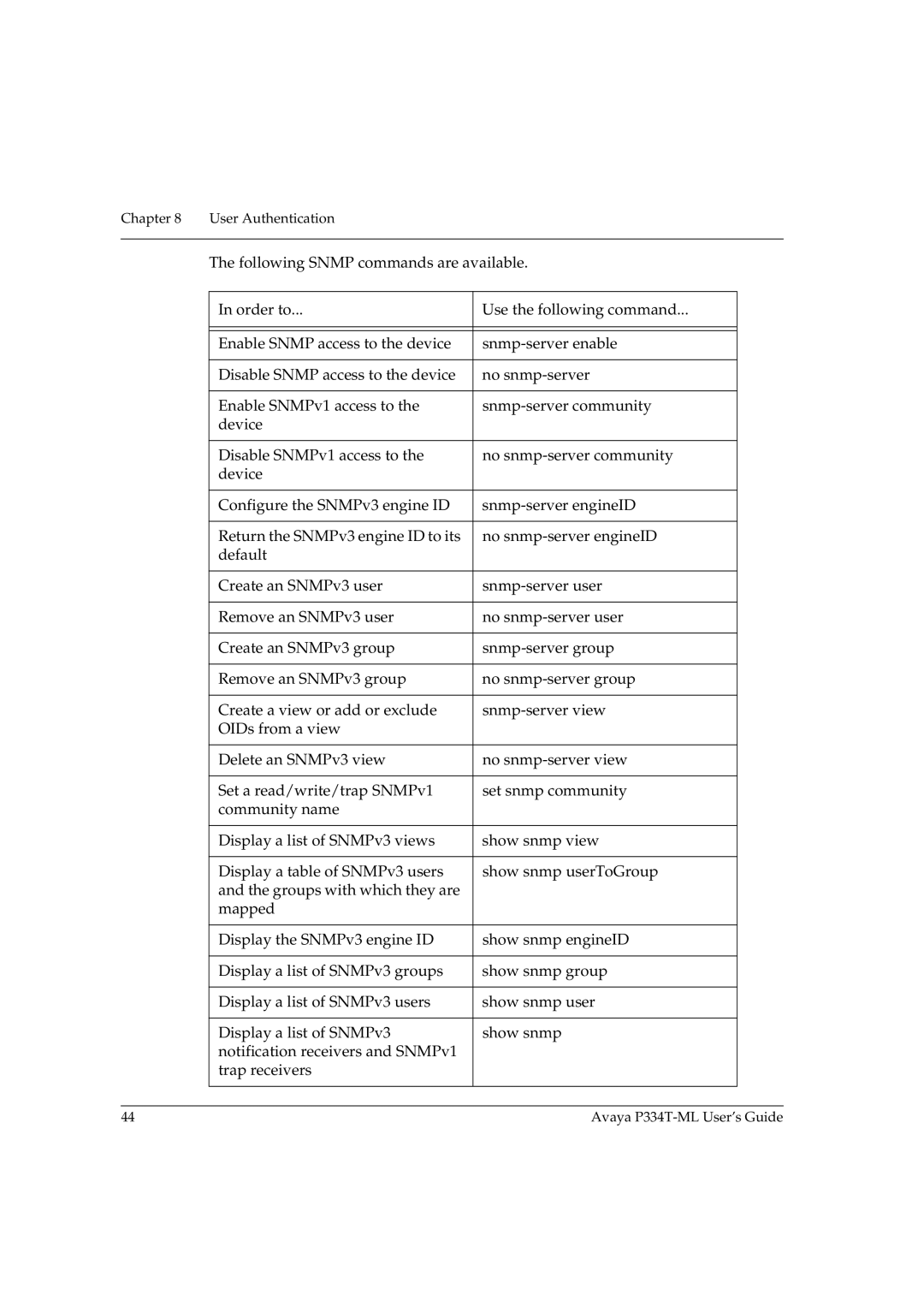
Chapter 8 User Authentication
The following SNMP commands are available.
In order to... | Use the following command... |
|
|
|
|
Enable SNMP access to the device | |
|
|
Disable SNMP access to the device | no |
|
|
Enable SNMPv1 access to the | |
device |
|
|
|
Disable SNMPv1 access to the | no |
device |
|
|
|
Configure the SNMPv3 engine ID | |
|
|
Return the SNMPv3 engine ID to its | no |
default |
|
|
|
Create an SNMPv3 user | |
|
|
Remove an SNMPv3 user | no |
|
|
Create an SNMPv3 group | |
|
|
Remove an SNMPv3 group | no |
|
|
Create a view or add or exclude | |
OIDs from a view |
|
|
|
Delete an SNMPv3 view | no |
|
|
Set a read/write/trap SNMPv1 | set snmp community |
community name |
|
|
|
Display a list of SNMPv3 views | show snmp view |
|
|
Display a table of SNMPv3 users | show snmp userToGroup |
and the groups with which they are |
|
mapped |
|
|
|
Display the SNMPv3 engine ID | show snmp engineID |
|
|
Display a list of SNMPv3 groups | show snmp group |
|
|
Display a list of SNMPv3 users | show snmp user |
|
|
Display a list of SNMPv3 | show snmp |
notification receivers and SNMPv1 |
|
trap receivers |
|
|
|
44 | Avaya |
